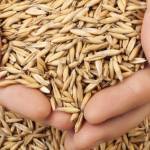Practical Considerations of Feed Processing Effects

There is a vast array of options in the methods of processing and presentation of the various ingredients in equine feeds. Processing choices include grinding, steam rolling, flaking, micronizing, pelleting, boiling, chaffing, silaging, extruding, and expelling, and there is a seemingly never-ending stream of blended complete mixes that use some combination of ingredients prepared in one or more of these ways.
Most processing methods aim at reducing the particle size and improving the digestibility and palatability of the feed.
After grinding or rolling of cereal grains, the digestibility of fiber is either not affected or improved by only 5%. Given that processed oats may cost significantly more than whole oats, the benefits are hard to justify. It is worth remembering that horses come equipped with a highly developed set of grinders in their teeth and will masticate particles to approximately 1.6 mm before swallowing. The eating of 1 kg (2.2 lb) of hay will require between 3,000 and 3,500 chewing movements while 1 kg (2.2 lb) of ground concentrate will involve only about 800 to 1,200 chewing movements.
It is not true that crushing or rolling grains will reduce the protein content. There is, however, some destruction of the vitamin content, but this is negligible compared to the horse’s total daily requirements. Grains make little contribution to the horse’s vitamin intake.
Steam pelleting and cooking improve the digestibility of dry matter and starch, thereby increasing the available energy content of the feed. The belief that cooked grains produce less heat during digestion than uncooked grains comes from the improved digestion and reduced microbial fermentation which reduces the heat produced as a result of digestion of fiber in the hindgut.
This same principle of reducing the heat increment of the diet should be applied to feeding horses in extremes of hot or cold weather. In hotter climates, the use of higher energy grains results in a lower heat increment of metabolism and will help reduce overheating with work. Fats are also useful in this situation. In colder weather, horses will naturally select high-fiber diets, which increase the heat increment from hindgut fermentation, helping to keep the horse warm.








